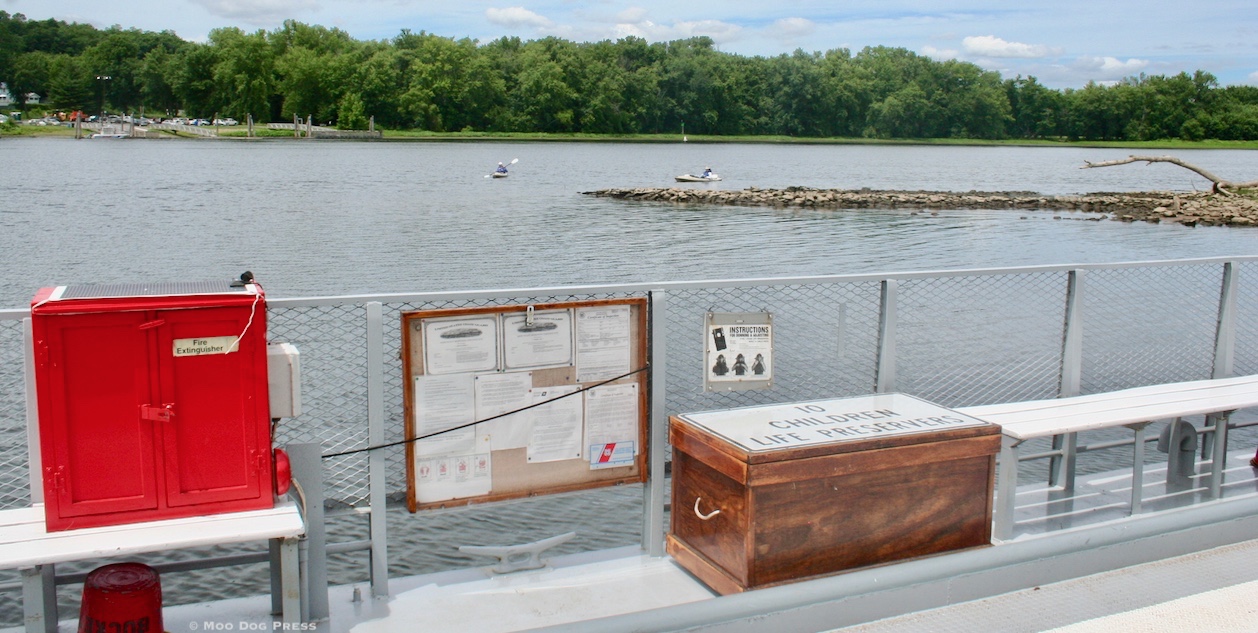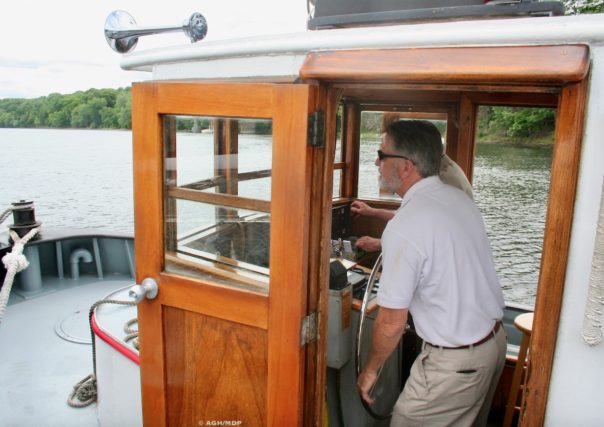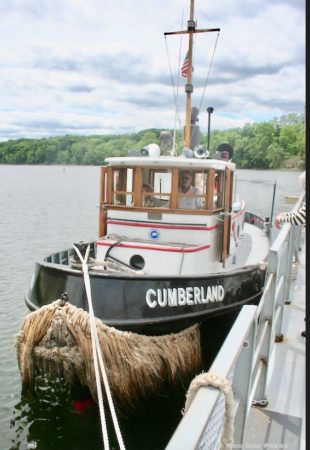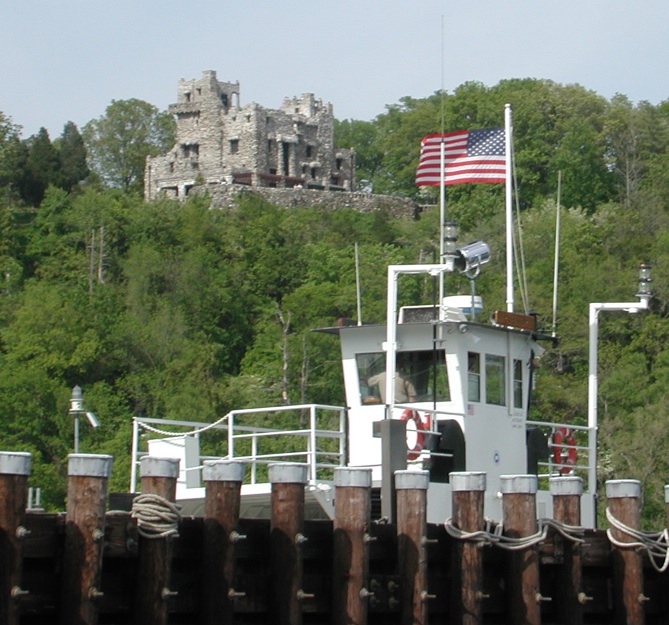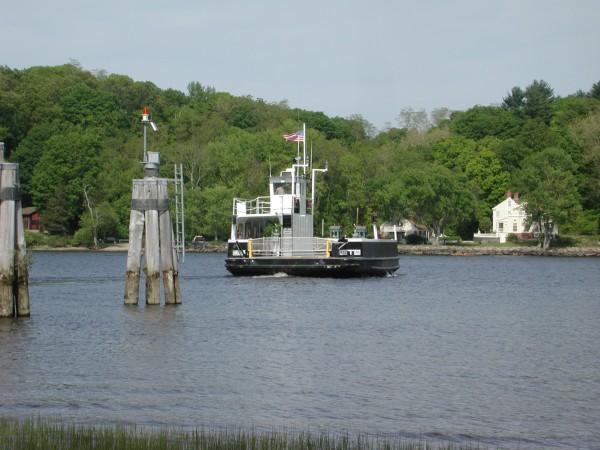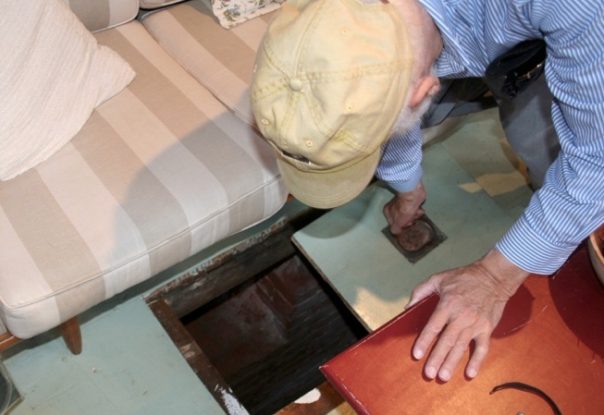Maritime Adventure: Aboard and About Connecticut River Ferryboats
“A river seems a magic thing. A magic, moving, living part of the very earth itself.”
— Laura Gilpin
Getting across a river can be a dilemma which is solved by humans in a number of ways.
Bridges take building, engineering to withstand freshets and floods with debris. Freezing provides solutions to getting across, if the ice is of adequate thickness. Swim? Not practical. Kayak, canoe, portage. Vessels, large and small. There's rafts, but also currents. Rope lines and livestock-driven tow systems. Ingenuity married to accomplishment in all forms solves the issue of getting from one place to another, taking into consideration factors of weather and the river's temperament.
In Connecticut, two crossings still provide commuters and travelers with an alternative to traffic congestion when bridges clog and/or open for maritime traffic. And it is magic to ride the river via ferry. (Note: Schedule and fares for Rocky Hill-Glastonbury ferry via CT DOT linked here. Hadlyme-Chester ferry linked here. Be aware that if the ferry is closed for “any reason during the regular operating season, it will be listed” on the CT DOT real-time travel information website CTTravelSmart. Check ahead of arrival to avoid disappointment.
Stephen Jones is professor emeritus in the Maritime Studies Program, which he co-founded for the University of Connecticut–Avery Point. He served his military obligation in the Coast Guard aboard an off-shore lighthouse during the Mid-Atlantic Storm of the Century and later at a lifeboat station. His books on coastal culture include Drifting, Harbor of Refuge, Back Waters, Short Voyages, Working Thin Waters and the Flat Hammock Press editions of Ellery Thompson’s Draggerman’s Haul and The Arthur Henry/Theodore Dreiser: An Island Cabin.
He has been executive producer of numerous maritime documentaries, including The Real McCoy, winner of five Emmys, and Ferryboats of the Connecticut River. He and his son, Captain Geoffrey Jones, run two maritime facilities on the Mystic River. He has served on the Town of Groton Shellfish Commission since 1968. His first excursion on a Connecticut river ferry was with his parents just prior to the outbreak of World War II.
Wick Griswold is an associate professor of sociology at the University of Hartford. His signature course is the Sociology of the Connecticut River. His books include A History of the Connecticut River, Griswold Point: History from the Mouth of the Connecticut River and Pirates and Privateers of Connecticut, all published by The History Press.
He is an associate producer of the documentary Ferryboats of the Connecticut River. He also hosts Connecticut River Drift on i-CRV Radio in Ivoryton, Connecticut. He is currently developing an educational project with the Connecticut River Museum and the Connecticut River Academy focusing on four hundred years of immigration into the Connecticut River Valley. He is commodore of the Connecticut River Drifting Society and lives where the river debouches into Long Island Sound.
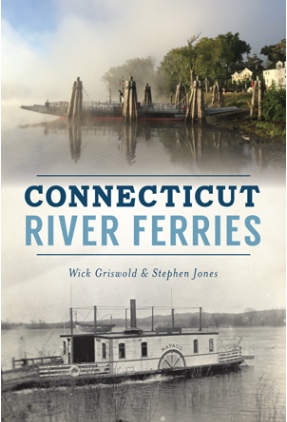
Connecticut River Ferries by Wick Griswold & Stephen Jones, published by Arcadia Publishing & The History Press.
From The Friends of Fort Trumbull (FB page) by June M. Hoye:
“Before the advent of steam power and bridge construction, there were more than 100 ferries that crossed the Connecticut River.
“Today, there are only two; The Rocky Hill Glastonbury Ferry and the Chester-Hadlyme Ferry which crosses at the base of the Gillette Castle.
“Jones has said that he and his co-author, Wick Griswold, decided to write this book to focus awareness on and to generate support for the remaining ferries.
“Prof. Jones has said, ‘The major misconception regarding ferries is that they either are no longer running or that to ride one is something so special as to require a space suit and an insurance rider!'
“Speaking from first-hand experience, the Chester-Hadlyme Ferry is a delightful adventure.
“Before the book came into existence, Jones had asked Griswold to be a producer for a documentary that he was making for Connecticut Public Television called Ferryboats of the Connecticut River. Once the documentary was completed, they decided to expand on the exposure by publishing a book on the same topic. The Friends and the public will be able to view the documentary and purchase the book the night of the presentation.
“Stephen Jones, who is retired Professor Emeritus in the Maritime Studies Program at the University of Connecticut-Avery Point, has had the life of a true Renaissance man. During this long career, he has served as a lobsterman, dock worker, filmmaker, Coast Guard lighthouse keeper, historian, author, publisher of Flat Hammock Press, and raconteur.”
The presentation with Prof. Stephen Jones, co-author of Connecticut River Ferryboats, was held at the Fort Trumbull State Park Conference Center, 90 Walbach St., New London, CT; (860) 444-7591. For information about Fort Trumbull State Park and the Friends of Fort Trumbull events visit www.fortfriends.org and on Facebook at Friends of Fort Trumbull State Park.
Monthly presentations include Thursday, Oct. 24, part of the series “Transportation of a Bygone Era In The Connecticut River Valley” featuring Steven Cryan, artist and train expert. The public is welcome; limited seating, so arrive early.
Editor's note: This story has been updated Sept. 26.
Below, a now-vanished ferry crossing video as viewed from aboard the Onrust on a tour from Connecticut River Museum.
Note: Flat Hammock Press of Mystic is an independent book publisher specializing in nautical non-fiction and coastal culture; online catalogue linked here.

